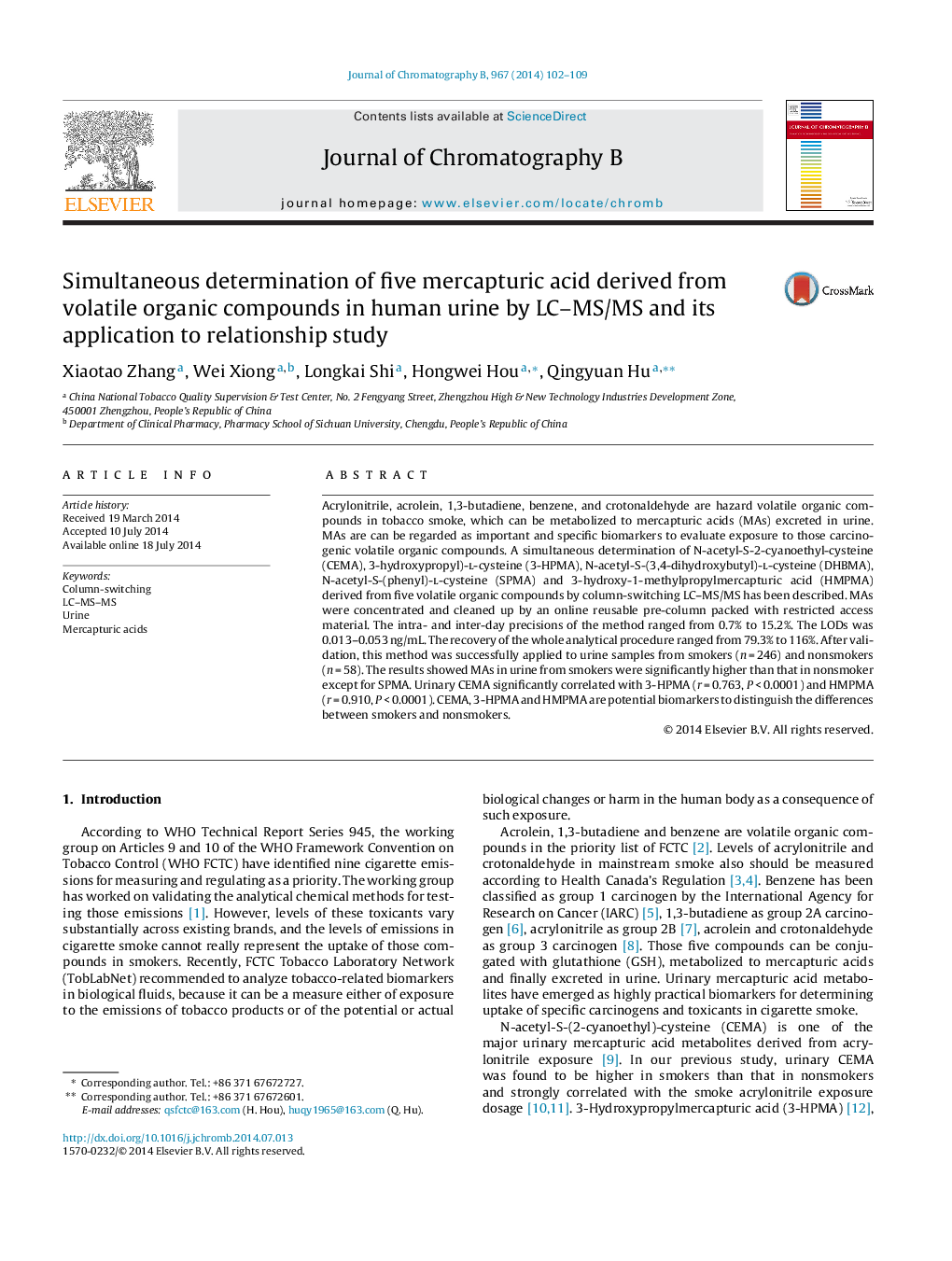| Article ID | Journal | Published Year | Pages | File Type |
|---|---|---|---|---|
| 1215736 | Journal of Chromatography B | 2014 | 8 Pages |
•A LC–MS/MS method was developed to determine 5 mercapturic acids from volatiles.•Five MAs in urine from smokers were significant higher than that from nonsmokers.•The relationship between smoke volatiles exposure and MAs in urine was studied.•CEMA was correlated with 3-HPMA (r = 0.763, p < 0.0001) and HMPMA (r = 0.910, p < 0.0001).
Acrylonitrile, acrolein, 1,3-butadiene, benzene, and crotonaldehyde are hazard volatile organic compounds in tobacco smoke, which can be metabolized to mercapturic acids (MAs) excreted in urine. MAs are can be regarded as important and specific biomarkers to evaluate exposure to those carcinogenic volatile organic compounds. A simultaneous determination of N-acetyl-S-2-cyanoethyl-cysteine (CEMA), 3-hydroxypropyl)-l-cysteine (3-HPMA), N-acetyl-S-(3,4-dihydroxybutyl)-l-cysteine (DHBMA), N-acetyl-S-(phenyl)-l-cysteine (SPMA) and 3-hydroxy-1-methylpropylmercapturic acid (HMPMA) derived from five volatile organic compounds by column-switching LC–MS/MS has been described. MAs were concentrated and cleaned up by an online reusable pre-column packed with restricted access material. The intra- and inter-day precisions of the method ranged from 0.7% to 15.2%. The LODs was 0.013–0.053 ng/mL. The recovery of the whole analytical procedure ranged from 79.3% to 116%. After validation, this method was successfully applied to urine samples from smokers (n = 246) and nonsmokers (n = 58). The results showed MAs in urine from smokers were significantly higher than that in nonsmoker except for SPMA. Urinary CEMA significantly correlated with 3-HPMA (r = 0.763, P < 0.0001) and HMPMA (r = 0.910, P < 0.0001). CEMA, 3-HPMA and HMPMA are potential biomarkers to distinguish the differences between smokers and nonsmokers.
